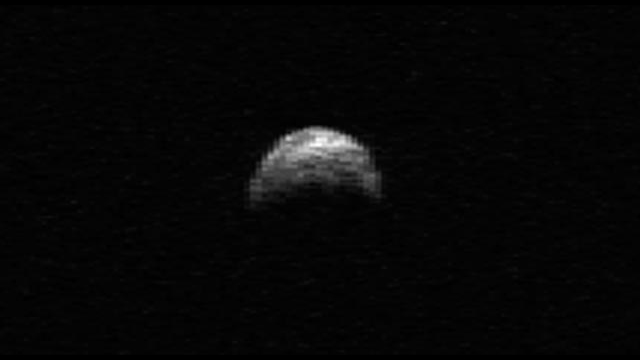
On November 8th at 3:28 PM PST the asteroid "2005 YU55" will pass by the Earth at a distance of just over 200,000 miles, or about 40,000 miles within the Moon's orbit. This is a relatively close pass for an asteroid, like a football-stadium-sized football making a field goal through the posts of the Earth and the Moon. Fortunately for us, there will be no touchdown….
At about 1,300 feet across, this roughly spherical, charcoal-black space rock would give us quite a wallop if it were to hit the Earth. A bit larger than a typical football stadium (including a bit of the parking lot), if this asteroid were to strike Earth's ocean a powerful tsunami result, and if it struck land, a city-sized hole in the ground. Not to mention a lot of fireworks.
Fortunately, the asteroid's trajectory is well known, and poses no threat to us (at this time).
Asteroids and comets that can come close to the Earth—Near Earth Objects, or NEOs—have been a concern to life on Earth since it began. From the end of the "era of heavy bombardment," when the young Earth endured frequent impacts by asteroids and comets, large and small, debris leftover from the formation of our Solar System still meets up on occasion with our planet. Craters from past large impacts can be found today, camouflaged by millennia or eons of erosion, sedimentation, and tectonic activity—Earth's scar-healing processes.
The crater left by a 10-mile-sized asteroid (that would be the stadium, parking lot, and the surrounding major metropolitan area) believed to have contributed to the demise of the dinosaurs lies hidden and buried at the tip of the Yucatan Peninsula: the Chicxulub crater. (No, Chicxulub is not an all-women car service station….) Other craters masquerade as round lakes and other landscape sculptures.
